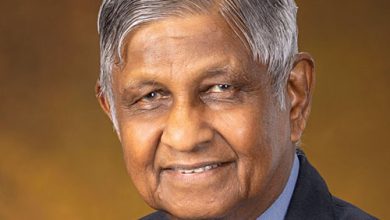COMMUNICATIONS INDUSTRY
Compiled by Savithri Rodrigo
COVID: A MOMENT OF TRUTH
Namalie Herath checks the evolution of communications in the ‘new normal’

Q: How has the communications industry evolved?
A: The changes experienced in the last few decades accelerated about five years ago and were fast tracked due to COVID-19.
Technology has enabled change. It has driven accessibility and affordability, in seeking information, entertainment and social connections. With millennials and gen Z born into the tech revolution, others are compelled to embrace this change. Many new users – mainly baby boomers and gen X – experienced the internet for the first time during the pandemic.
While the industry continues to evolve and innovate, traditional forms of communication will remain prevalent, relevant and influential.
Q: So has the consumer mindset transformed?
A: With changes in information consumption, consumer journeys are more engaged. Often, much research is done before decisions are made.
Brand loyalty is no longer relevant as the choices have increased. Emotional connections with each other or brands have little relevance. The consumer is king but very opinionated, influenced and influential. Information consumption is not passive anymore. So the communications industry has a major influence on society.
Q: What is consumer demand like in the ‘new normal’?
A: The main concern is to stay safe and real demand revolves around this. Needs must be met to ensure that life goes on in the new normal. These needs shape consumer habits and attitudes irreversibly, which will ultimately spell out the ‘next normal.’
As we began experiencing the new normal, a consumer reaction was clearly observed. Proactive health-based purchasing, reactive health management, pantry preparation, quarantine living and restricted living arrangements helped survival in the new normal.
Q: And how is the industry responding to these demands?
A: The surge and pace of digitalisation has been unprecedented in recent months. Governments, organisations and individuals accelerated the adoption process, resulting in investment.
There were increased sales of devices, smartphones, tabs and laptops. With connectivity being the facilitator, telecom service providers offered customised data packages while e-commerce platforms developed rapidly in retail, healthcare, banking, delivery and education. Brands became visible partners for constant updates on media, encouraging people to stay safe and reach out to the disadvantaged.
Q: What elements must the industry be most aware of?
A: In high-impact, low frequency (HILF) situations, it’s important for the industry to be sensitive in its approach and understand real consumer concerns. Brands must consider consumer circumstances, and be supportive of changes in attitude and behaviour prompted by COVID-19. They ought to recognise, connect, engage and support these changes.
Q: Are there emerging global trends in this environment?
A: With consumer beliefs and behaviour changing rapidly, companies must invest in deep consumer insights derived through AI.
The habits formed during COVID-19 are here to stay with the main shift being in how we work. Typical office infrastructure and culture will change. More open office and hotdesk concepts are likely to emerge. Organisations will adopt hybrid models and more women may be part of the workforce. Talent skill sets will focus on technology, data, analytics and AI.
Banking and retail ecosystems will transform to digital, online and contactless transactions. There will be more IoT integration in business and lifestyles. Education will be e-learning-based, and e-health would be another behavioural change in ordering medicines online and doctor consultations. Mental and physical wellbeing practices are taking different shapes.
Q: What challenges and opportunities do you foresee?
A: We’re experiencing a ‘black swan’ event – similar to the SARS and Middle East Respiratory Syndrome (MERS) outbreaks, financial crises, the Fukushima disaster and tsunamis, which prompted three distinct stages in outbreak, recovery and stabilisation but each phase with its own timeline.
Despite the differences, lessons from the past are relevant today.
Black swan events are moments of truth for brands and marketers. They refocus purpose, values, commitments, agility, creativity and spirit. We don’t know when but when they transpire, they’ll be fast, releasing pent-up demand marked by lasting shifts in attitudinal and behavioural change, creating new needs, priorities and competitive opportunities.
Brands that transform crises into opportunity will be those that consider and address impacts across the short, medium and long terms.






